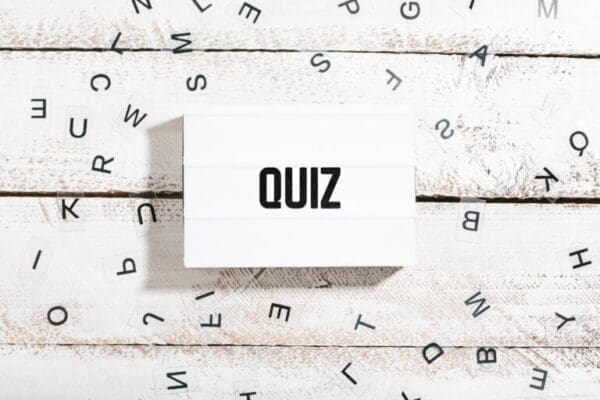HBDI FAQs
Find out more about the HBDI profile and Whole Brain Thinking. You can read our HBDI definition and FAQS in this glossary. You will also find a list of Frequently Asked Questions (FAQs) when discussing HBDI Whole Brain Thinking. For an in-depth guide to how you can develop your skills and improve your understanding, read our free HBDI Ultimate Guide.
The HBDI Whole Brain Thinking is a psychometric assessment or HBDI test, that shows how you prefer to think. We don’t much like the words HBDI test because that denotes better or worse, preferring assessment. It is often referred to as the ‘Whole Brain Model’ or the HBDI Herrmann Brain Dominance Instrument, it shows us which areas we prefer to think, and which areas we prefer not to think.
HBDI stands for the Herrmann Brain Dominance Instrument.
Refers to an individual’s talent or skill to do something.
Breaking down ideas or situations into smaller parts to closely examine the individual components and, in particular, how they work together.
A preference for creative activities such as drawing, painting, music, and art. For the most part, artistic individuals have a knack for identifying what’s pleasing to the eyes and which colours complement each other.
The result of an evaluation of something. For example, in HBDI, the assessment measures consistent preferences in a person’s thinking.
Also referred to as the Belbin Team Role Inventory (BTRI) and Belbin Self-Perception Inventory (BSPI), it is a behavioural assessment developed by Meredith Belbin with the intent to measure behavioural preferences.
The quadrant that represents the top left side of the brain. In particular, this area represents preferences in logic and facts.
The tendency to stick to tradition previously established beliefs and norms.
In HBDI, controlled refers to an individual’s ability to hold back and restrain one’s emotions in favour of objectivity.
The Central Test Personality Inventory is a personality test developed for management candidates to help measure leadership behaviour and competencies.
The Dominance Influence Steadiness Conscientiousness Assessment is based on Dr William Moulton Marston’s theory from his book, ‘Emotions of Normal People’. Later, a psychometric test based on this theory was made by industrial psychologist Walter Clarke, initially for the recruitment process. Furthermore, it was later on developed into a tool that helps teams understand how to work with each other’s personality.
A prevailing trait, institution, or personality. In particular, dominance means being able to take control or rule a certain group of thought, ideas, or even people.
The ability of a person to put himself or herself in someone else’s shoes.
Emotional Intelligence is an individual’s ability to perceive, understand, and help manage the self and another person’s emotions.
Able to explore new methods to improve and innovate existing processes in place.
An individual’s comfort level when one has to express a certain behaviour towards someone. In particular, the FIRO- B Assessment scores an individual’s preference on this behaviour.
Preference towards outside stimuli such as interaction with other people and other external means.
Fundamental Interpersonal Relations Orientation-Behavior (or FIRO-B) is a tool introduced by William Shutz in the late 80’s that scores how comfortable an individual is in a given situation.
The Five-Factor Model (FFM) (or Big Five Personality Traits) measures an individual’s neuroticism, agreeableness, extroversion, conscientiousness, and openness to experience.
The quadrants are representations of preferences in thinking in HBDI, completing the ‘whole brain’.
The Game Changer Index identifies an individual’s preference in contributing to an organisation. In particular, the common roles explored by GC index are the strategist, implementer, polisher, playmaker, and the game-changer.
A group of individuals with a shared demographic, common culture, time events, set of expectations and behaviours. For the most part, generation groups are determined by age such as Baby Boomers, Gen X, and Gen Y also referred to as Millenials.
The lower left quadrant of the brain that represents structure and organisation.
The roots of the Herrmann Brain Dominance Instrument (HBDI) can be traced back to 1976 when Ned Hermann began his research on the sources of creativity in the human brain. In particular, the instrument is a way to measure and describe thinking preferences in people, categorising them into four groups – Analytical thinking, Sequential (Practical) thinking, Interpersonal (Relational) thinking, and Imaginative (Experimental) thinking.
A test aimed at measuring an individual’s preferred responses when subjected to pressure or stress.
The ability to have the foresight or see the ‘big picture’ when presented with a concept, problem, or situation.
A preference for internal thoughts. In particular, introverts can be easily overwhelmed with outside stimuli.
Uses emotions to help make decisions, also known as ‘gut feel’.
Identifies and scores an individual’s managing style and how they interact and build relationships with their team and how they address performance concerns.
A psychometric indicator developed by Isabel Briggs Myers and Katharine Cook Myers that is largely based on Carl Jung’s theories.
Usually used during the hiring process, OPQ is a psychometric test that measures various personality traits that can be relevant to the vacancy.
Observing facts without emotion or biases. In particular, objectivity allows a person to look at a situation from a neutral perspective.
Also referred to as PAPI is another psychometric test designed to measure behaviours that may be relevant to a workplace setting.
In this context, pigeon-holing refers to typecasting or stereotyping an individual.
Measurements in psychology that are qualitative in nature. There is a wide range of psychometric indicators such as HBDI, and MBTI to help shed more light on an individual’s personality, motivations and preferences.
Decision making based on reason while taking out emotion.
The lower right quadrant of the brain indicating a preference in empathy and feelings.
A problem-solving approach that focuses on details and thoroughness.
Approaching ideas in a methodical manner. As a rule, following a sequence in order to understand or solve a situation.
The ability to process multiple mental inputs at the same time. For instance, the mental input could include verbal, musical, or visual.
16pf is aimed at identifying a person’s dominant traits based on 16 personality factors.
These are decisions that are made after careful calculations of risks involved in the situation. In particular, it considers all available options, works with what information is available and uses objectivity.
An approach influenced by biases, opinions, or personal feelings.
An increase in productivity and efficiency brought about by the collective efforts of a group. HBDI aims to find opportunities for organisations to reach synergy by understanding individual preferences and how it will complement with each other.
A person who prefers to separate and break down ideas and concepts to come up with a new one.
In HBDI, teaching refers to an individual’s ability to explain concepts in that can be easily understood and applied.
The kind of behaviour an individual wants other people to express towards themselves. Therefore, this is the opposite of expressed behaviour.
Understanding one’s preferences in thinking to their advantage while utilising other approaches to thinking to the individual’s and his/her team’s advantage. It uses the same basis as HBDI.
Commonly known as Ned Herrmann was the developer of the psychometric instrument, HBDI. Consequently, he is considered to be the ‘father of brain dominance technology’.
The upper right quadrant of the brain that represents intuition and taking risks.
The HBDI Whole Brain Thinking Model was developed by Ned Herrmann. This model is used to understand that each person has four quadrants of the brain when it comes to the process of thinking, communicating, and decision making. Measuring preferences to thinking & processing styles.
By understanding your preferences, you can consequently, achieve a greater appreciation for how you learn. This, in turn, will help you make better decisions, solve problems, improve communication.
Quadrant A is about facts and ‘computing’, and so ‘Cerulean Blue’ was chosen. The following quadrant, Quadrant B is about organisation and structure, and so green was chosen to represent ‘groundedness’. Quadrant C is about feeling and emotion, so red was chosen. Finally, Quadrant D is about imagination so yellow was chosen for its vibrancy.
The HBDI Whole Brain Thinking Model Profile was developed by Ned Herrmann. This model is used to understand that each person has four quadrants when it comes to the process of thinking, communicating, and decision making. Measuring preferences to thinking & processing styles.
The average time to complete the 120 questions is around 20 minutes, although you can stop and start as your wish, saving your progress as you go.
There are no HBDI online tests free, if however, you like to find out more about getting your own HBDI profiling pack, please contact us. https://www.makingbusinessmatter.co.uk/contact/
Our cost is £149 for the results package and results overview.
HBDI stands for Herrmann Brain Dominance Instrument.
The HBDI Whole Brain Thinking is a psychometric assessment, that shows how you prefer to think. It is often referred to as the ‘Whole Brain Model’ or the HBDI Herrmann Brain Dominance Instrument, it shows us which areas of our brain we prefer to think in, and which areas we prefer not to think in.




